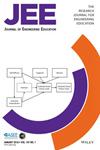Children's engineering identities-in-practice: An exploration of child–adult interactions in an out-of-school context
Abstract
Background
Research points to family talk and interactions involving STEM concepts as one of the most influential informal learning experiences that shape an individual's STEM identity development and encourage their pursuit of a STEM career. However, a recent literature review uncovers limited research regarding the development of engineering identity in young children.
Purpose
The purpose of this study was to add to this scant literature by exploring how children position themselves as engineers and how children are positioned as engineers through interactions with parents and other adults within a program focused on family engagement within an engineering design process.
Methods
This study includes two parent–child dyads. We collected and analyzed approximately 19.5 h of video data of the two child–parent dyads interacting with one another throughout an engineering design process as part of an out-of-school program.
Results
Results highlight three ways in which the two children enacted various engineering identities through their positioning, negotiation, and acceptance and/or rejection of positionalities as they engaged in an engineering design process with a parent. These identity enactments included (a) possessing knowledge and authority to make decisions regarding the development of their self-identified engineering problem and prototype; (b) questioning and challenging adult ideas, solutions, and construction of prototypes; and (c) documenting and communicating their thinking regarding the engineering design through sketches and notes.
Conclusions
The significance of this study lies in its potential to change the landscape of those who pursue an engineering career and to contribute to the limited research and ongoing conversations about how to foster environments that support families in creative and collaborative learning specific to the engineering discipline.

 求助内容:
求助内容: 应助结果提醒方式:
应助结果提醒方式:


